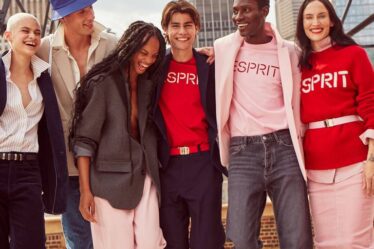
Ssense, the Canadian fashion e-tailer once valued at north of $4 billion, is perhaps best known for its currently ongoing biannual-ish sale — not only a genuine unmissable event for fashion fans to cop Margiela, Rick Owens and hundreds of other brands at up to 70 percent off but also a cultural phenomenon in its own right that has inspired countless memes.
But for stakeholders within the fashion ecosystem over which Ssense rules, the unbeatable low prices and the seemingly perennial discounts are no laughing matter. In an extensively researched report published last week, the niche fashion newsletter Blackbird Spyplane explores all the ways in which Ssense is purportedly hurting independent labels and boutiques, committing what one anonymous designer referred to as “luxury arbitrage” by charging the lowest rates for a vast volume of products, undercutting both brands’ own e-commerce channels and other multi-brand retailers.
A number of sources in the report compared Ssense to Amazon, pointing to the sheer scale and financial muscle — Ssense received a minority investment from private equity firm Sequoia in 2021 — that allows the retailer to stomach the narrow margins that come as a result of perpetual discounts while competitors simply cannot.
Discounting, nonetheless, is an inevitable reality in the current retail landscape, with or without Ssense. It’s hardly the only e-commerce platform with ongoing markdowns; Net-a-Porter, Bloomgindale’s and Neiman Marcus all have active sales on their sites currently. Nordstrom, meanwhile, is gearing up for its famous anniversary sale in a week.
For Los Angeles-based label RTA, for instance, it’s the department stores that tend to discount more often. Ssense, in fact, offers more favourable terms than its other wholesale partners, according to the brand’s founder and chief executive, David Rimokh.
From our own conversations with independent brands and boutiques, BoF has learned that Ssense isn’t necessarily the source of their existential challenges as much as it is a symptom of a difficult and competitive market overall, one that’s dominated by a number of powerful platforms and conglomerates, and further complicated by shifting dynamics and tools. Ssense declined to comment.
“Having a fashion brand today is like you’re constantly stepping on landmines,” said designer Emme Parsons, whose namesake shoe label was stocked on Ssense for a few seasons before the wholesale relationship ended. “It’s changing all the time, and you constantly have to look at what marketing tactics are working and not working, and what wholesalers are doing and what their buy looks like.”
It’s critical for brands to complement their wholesale distribution with a healthy direct-to-consumer channel, where margins are higher and customers are more loyal. Regular seasonal orders are not always guaranteed, which makes it dangerous for a small label to be over-reliant on one wholesale partner. The Barneys’ bankruptcy was a sobering reminder of that fact. “Sometimes buyers just drop off and ghost you,” said Parsons.
But when managed in a strategic way, wholesale can be a powerful tool for generating brand awareness.
“When we launched the company, we wanted to be only direct, but in order to hit a certain sales volume, we needed [outside] retailers,” said David Lê, cofounder of New York-based brand Maiden Name.
While rampant discounting is a problem for Maiden Name, whose biggest stockist happens to be Ssense, it doesn’t always result in the cannibalisation of the brand’s own sales, Lê added, because the assortment of products differs from channel to channel.
Maiden Name’s biggest defence against the negative effects of wholesale, however, is its physical outpost in Manhattan’s popular Lower East Side neighbourhood.
“Overall, it is just so competitive there is too much product and too many brands,” Lê said. “The only thing that has really worked for us is brick-and-mortar. It allows us to communicate in a rich way.” That kind of storytelling, he added, simply doesn’t exist on massive e-commerce platforms that carry thousands of different styles.
Emme Parsons, RTA and Maiden Name all operate on a 50-50 distribution model, splitting sales about equally between wholesale and direct. Maintaining a balance isn’t easy. Sometimes, this requires saying no to a large wholesale order because the cost to produce it might not be worth it, said Parsons. “Some of my first orders from my biggest wholesale accounts were too big, and it stretched us financially and ended up oversaturating the market.”
Independent boutiques, too, can mitigate competition from the e-commerce giants by leaning into their local clientele and individual niche. A site like Ssense serves a massive hodgepodge of products to everyone, but one-off shops can cater to their specific customer base by offering a sharply curated selection and a personable shopping experience, said Telsha Anderson, who opened her boutique T.A. in New York’s Meatpacking District in 2020.
“Any major retailer can be a threat to a small business like mine,” she added. “But one thing that smaller boutiques have a handle on is our client base and our customer base. Creating a niche small audience works for us, and that loyalty behind it really works too.”



